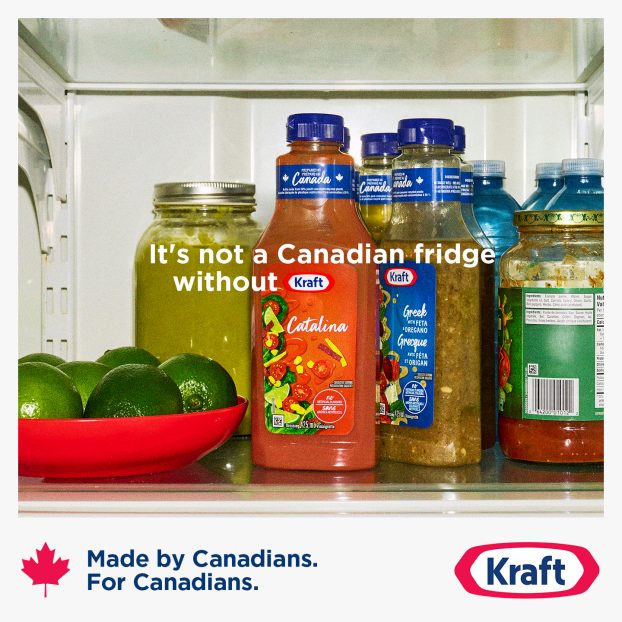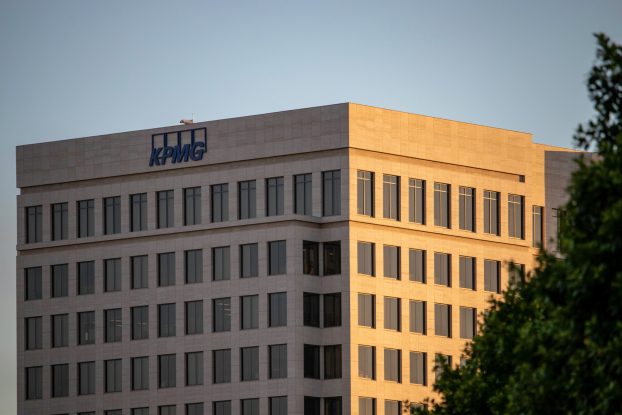Blue is the new green. Wondering how brands might approach water conservation, we chose the hot-button issue as a test case to look at the strategies being adopted as brands embark on new CSR initiatives – or decide how to communicate existing efforts – knowing what they know now about greenwash backlash and eco-messaging clutter.
Getting the house in order: RBC Blue Water Project
Royal Bank of Canada has pledged $50 million over the next 10 years to global, regional and community-based initiatives that tackle water conservation – the largest charitable commitment in its history.
Announced last October, the RBC Blue Water project has already pledged $10 million to Cirque du Soleil founder Guy Laliberté’s One Drop Foundation, which works with Oxfam on water conservation and awareness projects in Latin America, Africa and Asia, and $500,000 to Tides Canada Foundation’s Great Bear Rainforest campaign to fund conservation management and sustainable economic development in B.C.
Over the next few months, the advisory panel, staffed by water experts and community leaders from across North America, will develop criteria for various grants, with applications for leadership grants open as of Earth Day.
After developing an in-depth Environmental Blueprint for stakeholders in 2006, RBC director of corporate responsibility Lynn Patterson felt that, rather than trying to be all things to all people, RBC could do more good on two key issues: diversity and the environment.
‘We needed a topic around which our entire company could rally,’ she says. ‘Everybody’s looking at their paper and energy use right now. We wanted to find something that people aren’t thinking about right now.’
The links between FIs and investing might be clear, but the links between RBC’s brand and water are not, Patterson acknowledges.
‘When we first started talking about water, the whole world wasn’t talking about water,’ she says. ‘We loved the idea because RBC is a Canadian-based company and we have more fresh water than almost any other nation in the world. We’re also a water-squandering nation. We saw this big crisis coming and wanted to be making a difference at the front end of it.’
RBC partnered with Unilever and the Canadian Partnership Initiative of the UN Water for Life Decade on a survey of Canadians’ concerns about water. The result? We aren’t concerned, which makes the need for awareness-building more pressing. But aside from a few newspaper ads at launch and on World Water Day in March, activities have not been consumer-facing – yet.
‘We have started conversations with our clients about the issue,’ says Maya Russell of RBC brand marketing. ‘But we want to feel confident that RBC employees understand the issue. We want it to be more than a corporate brand alignment; we want RBC as a corporate community to care about the cause and to embrace it as well.’
So for now, RBC, whose CSR cred includes launching an environmental lending policy in 1991, is focusing on spreading the word about Blue Water among its 70,000 employees worldwide before taking it to the public.
‘We’re taking a phased approach, focusing on our employees first,’ says Patterson. ‘[One] thing we’ve learned on the environmental front is that a company needs to have its own act together before it goes out in the marketplace. It really is dangerous, and we’re careful. Our environmental approach isn’t a marketing campaign, it’s an integrated program within the company.’
Creating a new brand: Unilever Go Blue
Unilever Canada, on the other hand, is speaking directly to consumers – albeit through a mostly unbranded campaign.
Unilever launched Go Blue last month to spread awareness and change consumer behaviour around water conservation, as well as align some of its products with the cause by touting packaging and other innovations at retail.
The campaign centres on non-Unilever-branded TV, cinema, print and OOH in cooperation with media partners Corus, Alliance Atlantis, CityTV and Canal D. All advertising drives to goblue.org, which at this stage is primarily an information resource.
Brand-building director Sharon Macleod says she considered branding the advertising as Unilever but ultimately chose not to, to preserve the simplicity of the message. ‘We’re not doing it to raise awareness of Unilever,’ she says. ‘I wonder if that would actually take away from the message. We really want people to go blue, and it’s not about Unilever as a company. It’s about helping people make a difference in terms of reducing the amount of water they use.’
Consumers will make the connection at retail on May 10, when pallets of Unilever product arranged according to domestic area – kitchen, laundry and bathroom – will be displayed with the Go Blue signage in Wal-Mart stores across the country.
The display will also include brochures on how Canadians can ‘cut their water use in half’ and a list of water-friendly Unilever brands, from which a percentage of sales will be donated to Evergreen’s Aquatic Stewardship program, formed with Unilever in 2003. Part of Evergreen’s Common Grounds program, the project funds Canadian orgs that work to control runoff and erosion, support new restoration techniques and educate the public.
Go Blue also includes a national youth ambassador program through which students entered a contest to be chosen to represent water issues in their communities. The winners will be announced May 8, when Mysteries of the Great Lakes, the Imax film of which Unilever – not Go Blue – is a major sponsor, launches.
While these efforts are unique to Canada, water has become a touchpoint for Unilever globally. The connection between Unilever and water is obvious, says Macleod: ‘On a practical level, two-thirds of Unilever’s raw materials come from agriculture resources. As a company, we know that fresh water is crucial to a viable business.’
Macleod believes the average consumer is not as skeptical about corporate greenwashing as activists can be, and she is confident that Unilever’s track record would stand up to inspection. Internally, the company is working to reduce the carbon and water footprint of its facilities, such as the Lipton plant in Rexdale, Ont., which won a Green Toronto award for reducing water use by 48%.
Go Blue marks Unilever’s shift to integrate social responsibility more centrally into its business plan, now that consumer and retailer appetite will support the effort, says Macleod. ‘As much as consumers were interested in environmental products [in the past], they didn’t necessarily buy them. I think we’ve reached a tipping point now, where they’re voting with their dollars and will purchase things that have an environmental benefit.’
Standing on independent standards: Whirlpool
Meanwhile, some brands choose to navigate the enviro waters by letting their product features speak for themselves.
As the market leader for washing machines in Canada, Whirlpool adheres to the Energy Star (ES) ratings system, managed in Canada by Natural Resources Canada, rather than creating its own program or initiative. The brand actively promotes ES as part of its products’ eco-attributes to convey its green commitment
to consumers.
The Duet front-loading washer/dryer has become a flagship product for the brand. The technology enables water savings of up to 73%, and that message is carried forward into advertising across all media. Last May, Whirlpool teamed up with Unilever’s Tide brand to offer a year’s supply of Tide High Efficiency (HE) detergent with a Duet purchase.
As part of a broader awareness push, the brand advises consumers to check for rebates on efficient appliances and cross-promotes tax incentives with municipalities. It also supports ES initiatives beyond its product portfolio, ensuring, for instance, that its Habitat for Humanity projects adhere to ES standards in windows, lighting, etc., as well as fridges, washers and dishwashers.
While Whirlpool.ca highlights green achievements such as the ES Sustained Excellence Award which the brand won last year, the U.S. site, whirlpool.com, includes a microsite dedicated to establishing the long history of the brand’s ES partnership, as well as awards, rated products, an energy savings calculator and contests such as the Home Energy Blueprint Makeover for 10 families. Whirlpool Canada is working on a similar awareness project in Canada in 2008.
‘What we want to do is elevate the consumer’s awareness of how much benefit to the environment they’ll be able to get from a carbon and water footprint standpoint when buying an ES product,’ says Patrick Cadieux, senior marketing manager, Whirlpool and value brands. ‘So over the years, in our marketing mix, ES is always part of our communication, whether it is online, on TV, on web, even in store.’
Duet campaigns over the past few years have incorporated visual ‘natural’ elements as part of the product personality. ‘That in itself is not a conservation strategy, but there’s the look and feel of beautiful nature, and what we’re laying on top of it is product development and CSR, plus consumer education on water conservation,’ says Cadieux.
Whirlpool’s primary message is still productivity. ‘Water and energy conservation are at a secondary level,’ says Cadieux. ‘It’s a question of being more single-minded in terms of messaging, and we believe there’s a stronger benefit for us to leverage the productivity message.’
In the U.S., Whirlpool’s green credibility has been boosted by this quieter approach. According to a March 2008 Nielsen Online study, American bloggers ranked the brand higher than the competition for focusing on product development and external standards rather than PR.
‘At this point, we feel comfortable that what we are putting out there meets or exceeds the consumer’s expectations with regards to the environment,’ says Cadieux.
Jump to:
cause + action top champion: Vancity
cause + action winner: G.A.P Adventures
cause + action winner: Pantene
cause + action contender: Fairmont Hotels & Resorts























